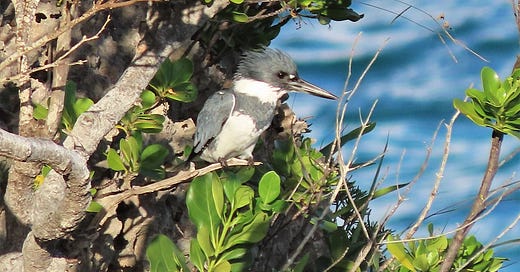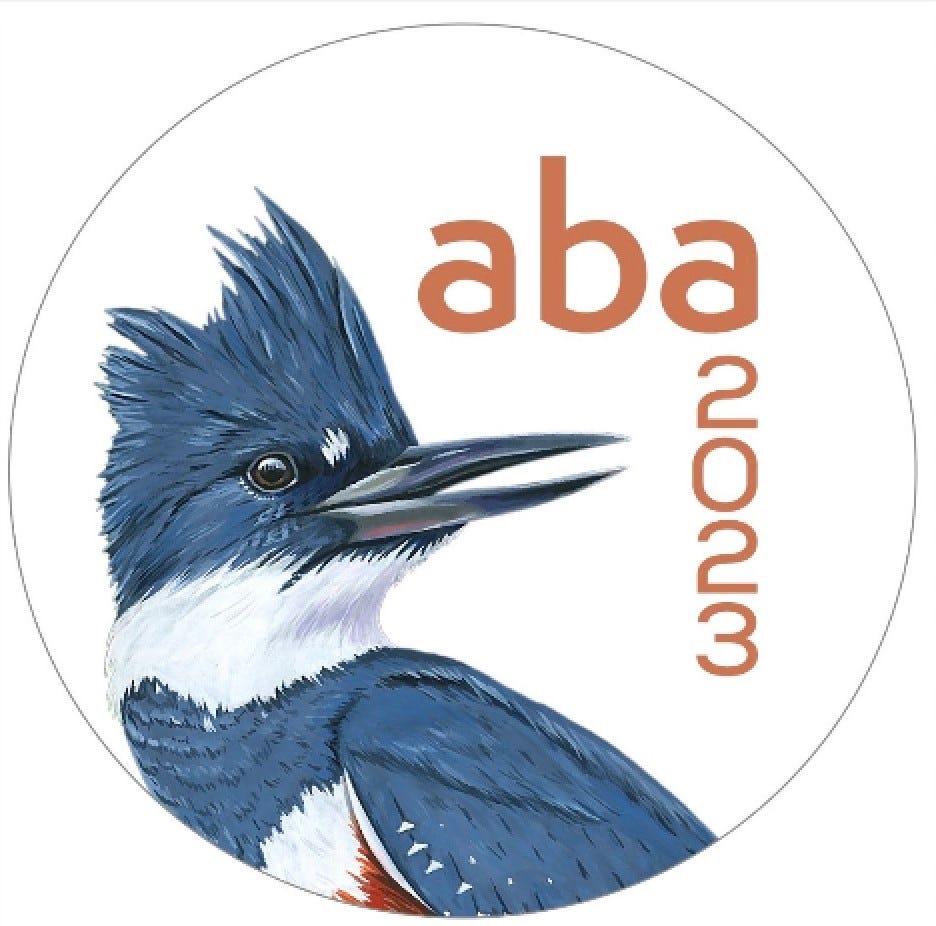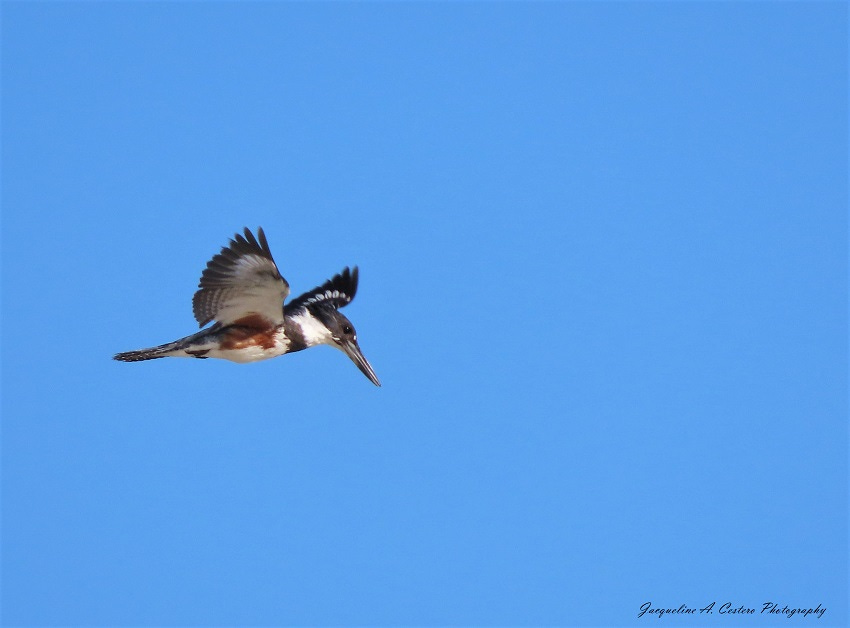On December 10, 2022, the American Birding Association announced the Belted Kingfisher as the ABA 2023 Bird of the Year! The annual event was marked with bird walks and the official portrait unveiling by Natural Science Illustrator -Liz Clayton Fuller. (You can see Liz’s work on Instagram @ipaintbirbs.) Social media was all “aTwitter” as well. LOL!
The ABA describes its process as follows:
“Each fall, anticipation builds for the annual reveal of the species selected to become the American Birding Association’s Bird of the Year. The bird is chosen to inspire and educate, to spark enthusiasm for birding, and to highlight a conservation challenge or success. Charisma and accessibility are often key traits of the bird chosen, so even a familiar bird can be seen through a new lens and appreciated in new ways. It’s a true celebration of birding and the birds all around us.”
During the launch, it was noted that the Belted Kingfisher was chosen because the female is flashier than the male. This is unusual in the bird world, where males are generally more colorful.
Female Kingfishers display a rusty chest band making the distinction between the sexes straightforward.
So why do we care about this particular accolade?
Belted Kingfishers are widely distributed and spend the winters on Anguilla. This post could have easily been included in my Backyard Birding series because they visit daily from October to April.
They are often seen on our wetlands devouring tasty fish from the sea or the pond. They also display the mad skill of hovering above the ocean, ready to pounce.
I share a few tidbits of information from the Birds of the World Cornell Lab of Ornithology site:
“The Belted Kingfisher, one of the most widespread landbirds in North America, remains poorly studied. Throughout the continent, it inhabits diverse aquatic habitats where it typically perches over clear open water before plunge-diving for prey-chiefly fish, but also other aquatic animals such as crayfish. Undigested remains of such prey are regularly regurgitated as pellets, which fall beneath fishing and roosting perches.”
Their rattling call is a sure sign they are nearby and is known to make me levitate from my chair to capture a moment.
When not vocalizing, they might be quietly perched in a nearby tree. They choose branches close to the water, where they watch for unsuspecting prey. They are particularly fond of the wild “Ground Seas” we experience during the winter.
They are a welcome addition to our overwintering species in Anguilla.
Enjoy a few moments with the 2023 ABA Bird of the Year!
What bird would you choose for Bird of the Year? I would love to hear your thoughts.
I am wishing you all the best for a safe and healthy holiday season!










